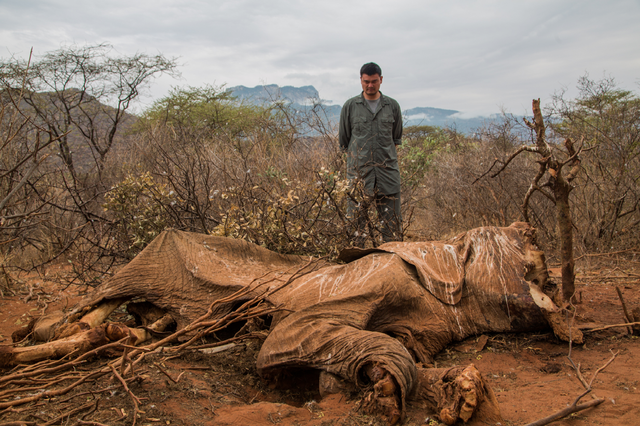
is a giant man, but he paled in comparison to the corpse of the elephant stripped of ivory that lay at his feet in Samburu National Reserve, Kenya. The 7' 6″, 310-pound, retired center from China, a former player for the NBA's Houston Rockets, landed in Africa on August 10 to raise awareness about the ills of poaching. His loyal fan base in China, where ivory is viewed as whose price is rising, makes him an appealing celebrity to conservation organizations like . In 2006, he and later began a campaign to prevent its consumption in China. This August in Africa, he visited endangered white rhinos, stood over the corpse of that dead elephant, and visited rooms stockpiled with loads of ivory seized so that it could not be shipped overseas. “I think we need to increase the public awareness of what ivory is made of,” Yao told the . “The elephants, including rhinos, their numbers are decreasing.”
Ming's visit to Africa will be featured in a new documentary, . His message has implications that go beyond the reduction of animals in Africa. In May, the Senate Foreign Relations Committe held a hearing called “.”
Senator John Kerry pointed out that the poaching trade in ivory and rhino horn runs primarily from Africa to Asia, involves armies and organized crime syndicates that cross borders to smuggle parts, and includes armed men who raid villages and kill people who get in their way. “Poaching is not just a security threat in Africa,” said Kerry. “It’s also a menace to developing economies, and it thrives where governance is weakest. Poachers with heavy weapons are a danger to lightly armed rangers and civilians as well as the animals they target.”
The demand side of this primarily comes from East Asia, where rhino horn is more valuable at times than gold. In China, elephant ivory is increasingly in demand by a growing upper class. The supply side is in Africa, where last year enforcement efforts seized 23 metric tons of ivory, or the tusks of nearly . That number is a sign that things are getting worse, according to conservation experts. “In 23 years of compiling ivory seizure data for ETIS, this is the worst year ever for large ivory seizures—2011 has truly been a for elephants,” said Tom Milliken, TRAFFIC’s elephant expert.
The trade in illegal wildlife parts is not restricted to just elephants and rhinos. The U.S. State Department estimates the trade in wildlife parts is a $10 to $20 billion industry, second only to the smuggling of drugs and arms in terms of value. Aside from the reduction in species numbers and the human deaths on the supply side, the smuggling of live and dead animals can result in the transmission of disease on both the supply and demand side.
The slaughter to meet this demand is driving tigers, elephants, rhinoceros, exotic birds, and many other species to the brink of extinction. In addition, the alarming rise in virulent wildlife diseases, such as avian influenza and severe acute respiratory syndrome (SARS), which can be spread by illegal wildlife trade and endanger public health. —
—Joe Spring